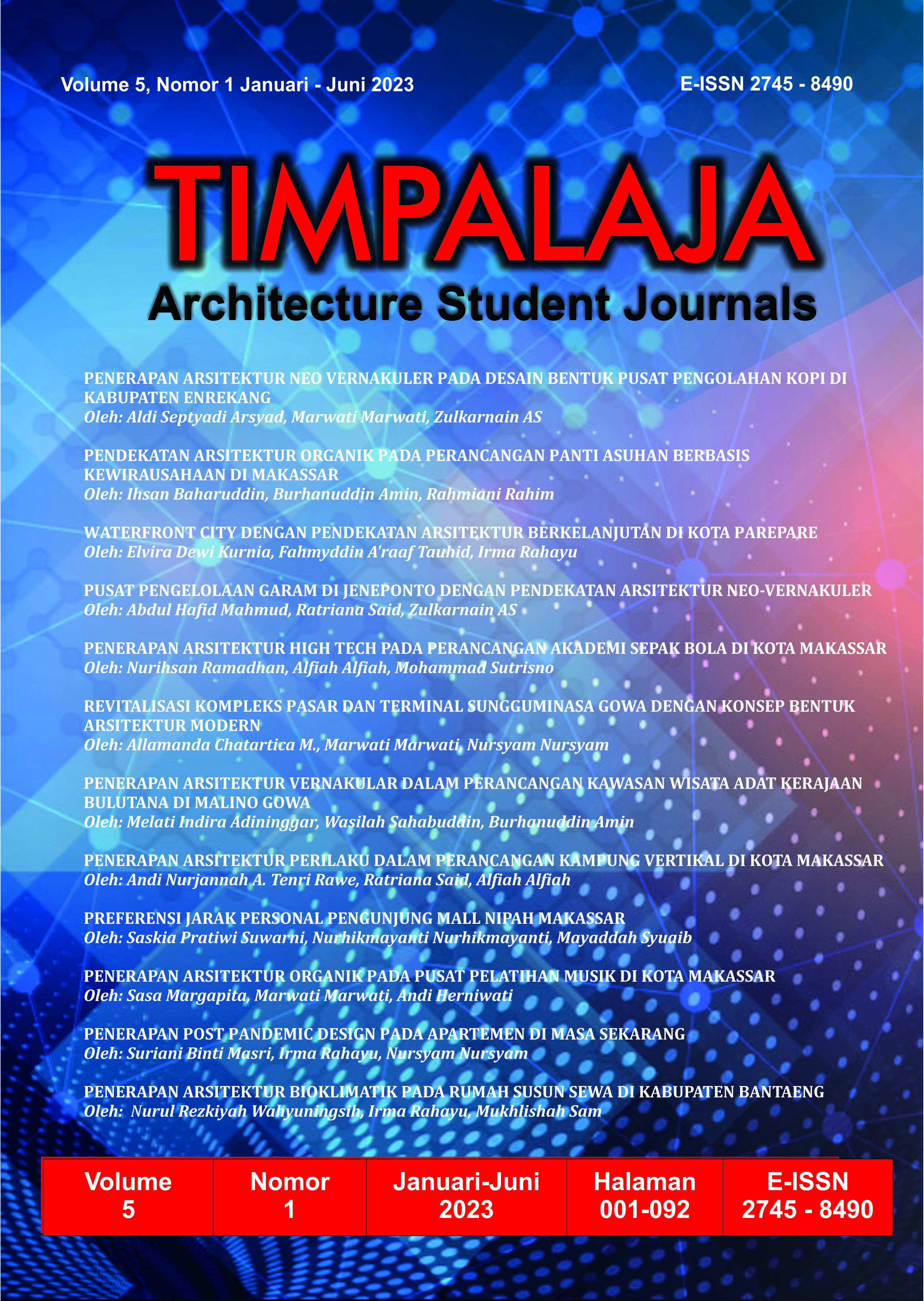Pendekatan Arsitektur Organik Pada Perancangan Panti Asuhan Berbasis Kewirausahaan Di Makassar
Abstract
_ Organic Architecture Approach on Entrepreneurship-based Orphanage Design in Makassar In society, the role of the orphanage is not merely to become the shelter for orphans but also to become the coffer of social life which is oriented towards their foster child’s growth. The relationship between een foster child and society is not merely such as the relationship between donor and beneficiary rather, it is a mutualistic relationship but by no means mutualistic in material terms. Society can be a donor in any social terms. The orphanage, which is one of the coffers of social life, can stimulate awareness of society related to the importance of the role and potential of children in the future through the management of orphanages based on entrepreneurship. The main purpose of implementing an entrepreneurial base is not solely to produce children who are experts at economic transactions but rather to instill the basic characteristics of entrepreneurs, such as honesty, responsibility, social spirit, and independence. Organic architecture applied as an architectural approach aims to meet the needs for space based on physical, social, and especially mental aspects by applying the “Youthful & Endless”. Organic architecture supports the entrepreneurial base by designing sustainable and attractive buildings by applying the “Living music” principle. The design also applies the “Of the hill” principle by designing a unified (single) building layout for the limited site area problem in Makassar.
References
Bahfiarti, Tuti, Rahmat Muhammad, and Amiruddin. (2019). “Kajian Penanganan Anak Gelandangan Dan Pengemis Di Kota Makassar.” Jurnal Inovasi Dan Pelayanan Publik Makassar 1 (2): 43–54.
BPS Kota Makassar. (2021). Kota Makassar Dalam Angka 2021. Makassar.
Niles, Craig. (2021). Makassar Livable City Plan: Situation Assessment Report. Makassar.
Pearson, David. (2002). New Organic Architecture. California: Univercity of California Press.
Rashikha, Tezza Nur Ghina. (2009). “Arsitektur Organik Kontemporer.” Universitas Indonesia.
Sujanra, Song Prasetya, Ummul Mustaqimmah, and Agung Kumoro Wahyuwibowo. (2017). “Penerapan Teori Arsitektur Organik Dalam Strategi Perancangan Pusat Pengembangan Industri Kreatif Di Bandung.” Arsitektura 15 (2): 506–13.
Wati, Gina Liana, and Anisa. (2020). “Kajian Penerapan Arsitektur Organik Pada Kawasan Agrowisata.” ARTEKS 5 (2): 185–96.
Widodo, Johannes. (2018). “Human, Nature, Dan Architecture.” ARTEKS 3 (2): 127–30.
Zimmerer, and Scarborough. (2008). Kewirausahaan Dan Manajemen Usaha Kecil. Jakarta: Salemba Empat.
Copyright (c) 2023 Ihsan Baharuddin, Burhanuddin Amin, Rahmiani Rahim

This work is licensed under a Creative Commons Attribution-ShareAlike 4.0 International License.
By submitting your manuscript to our journal, you are following Copyright and License







